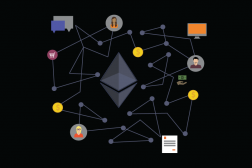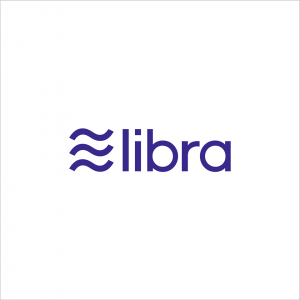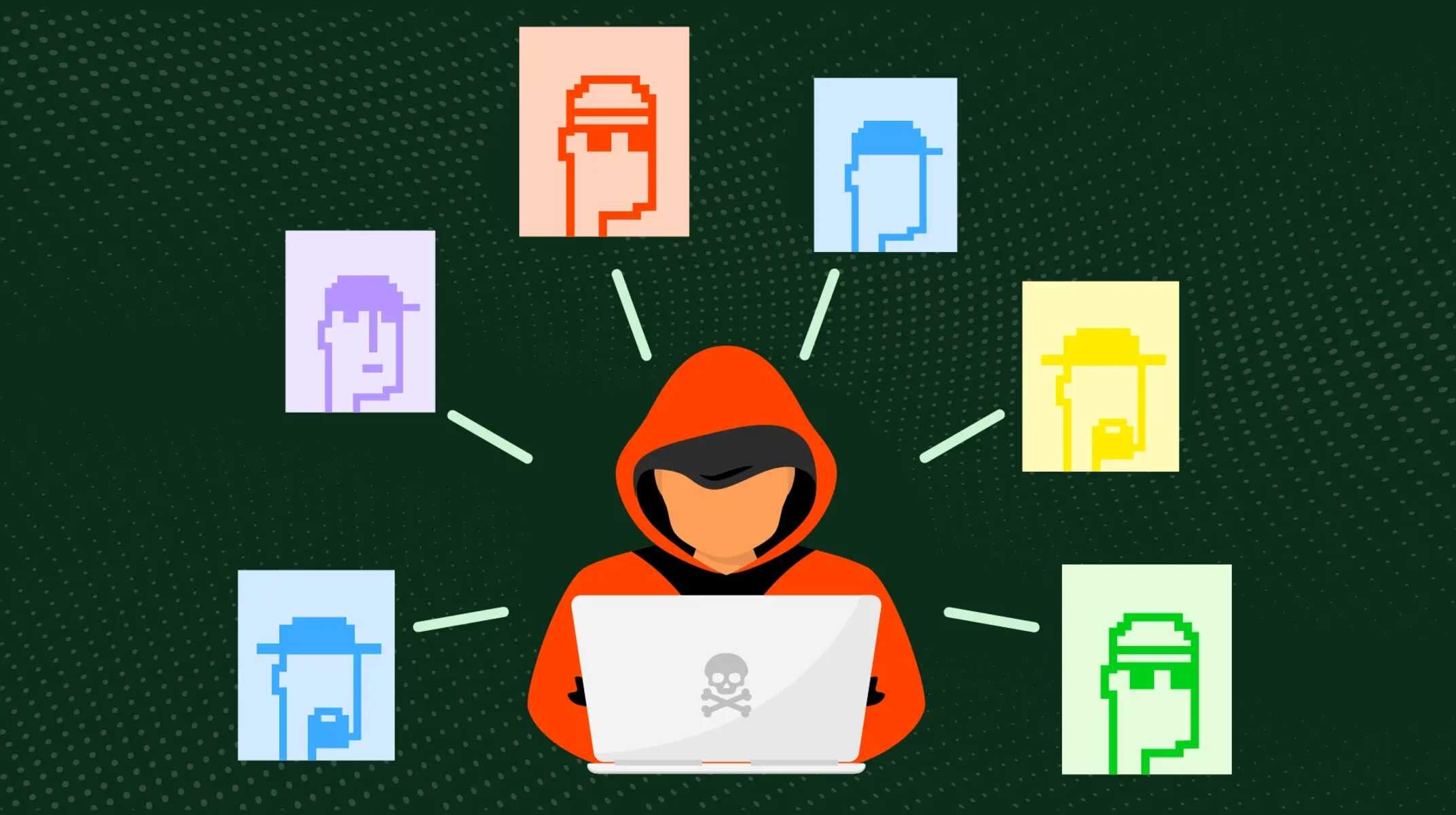Introduction
Blockchain technology has taken the world by storm with its potential to revolutionize various industries. From finance to supply chain management, blockchain has the power to disrupt traditional systems and provide a secure, transparent, and decentralized environment for transactions and data storage.
So, what exactly is blockchain? In simple terms, a blockchain is a digital ledger that records transactions across multiple computers or nodes. This ledger is decentralized, meaning it is not controlled by a central authority, making it resistant to tampering or fraud.
The concept of blockchain was first introduced in 2008 by an anonymous person or group of people using the pseudonym Satoshi Nakamoto, as a key component of the cryptocurrency Bitcoin. Since then, its potential applications have expanded beyond cryptocurrencies, with various industries exploring its capabilities.
Blockchain technology works on the basis of a distributed network, where all participating nodes have access to the same information. Transactions are verified and added to the blockchain through a consensus mechanism, such as proof of work or proof of stake. Once added, these transactions are immutable, meaning they cannot be altered or deleted.
One of the key features of blockchain technology is its transparency. All transactions are visible to participants in the network, eliminating the need for intermediaries or third parties to validate or authenticate the transactions. This transparency also helps in reducing the risk of fraud or manipulation.
Moreover, blockchain is designed to be secure. Each transaction is encrypted and linked to the previous transaction, forming a chain. This makes it incredibly difficult for hackers to tamper with the data, as any changes made to a block would require altering all subsequent blocks on the chain, which is practically impossible.
Blockchain technology is not limited to cryptocurrencies like Bitcoin. It has the potential to transform various industries, including finance, supply chain management, healthcare, real estate, and more. By eliminating the need for intermediaries and providing a secure and transparent platform for transactions, blockchain can streamline processes, reduce costs, and increase trust.
This article aims to delve deeper into the world of blockchain technology, exploring its mechanics, characteristics, advantages, and disadvantages. We will also explore real-world applications of blockchain and discuss where the future of this technology is headed.
Definition of Blockchain
Blockchain is a distributed ledger technology that enables the secure and transparent recording of transactions across multiple computers or nodes. It is a decentralized system that eliminates the need for a central authority to validate and authenticate transactions.
At its core, a blockchain is a chain of blocks, where each block contains a list of transactions. These transactions are grouped together in blocks and added to the blockchain in a sequential manner. Each block is linked to the previous block through a cryptographic hash, ensuring the integrity and immutability of the data.
Unlike traditional databases where data is stored in a central location, blockchain operates in a peer-to-peer network. All participating nodes have a copy of the entire blockchain, making it highly resilient to failures or attacks. This distributed nature also ensures that there is no single point of failure or vulnerability.
The transactions recorded on the blockchain are validated and added to the ledger through a consensus mechanism. This mechanism ensures that all participating nodes agree on the validity of the transactions before they are added to the blockchain. Typically, the most popular consensus mechanisms are proof of work (PoW) and proof of stake (PoS).
One of the key features of blockchain is its transparency. All transactions recorded on the blockchain are visible to all participants in the network. This transparency enhances trust among participants as they can independently verify the authenticity and integrity of the transactions.
Another important aspect of blockchain is its security. The immutability of the blockchain and the cryptographic algorithms used to secure the data make it highly resistant to tampering or fraud. Once a transaction is added to the blockchain, it becomes practically impossible to alter or delete it.
Blockchain technology was initially introduced as the underlying technology for cryptocurrencies like Bitcoin. However, its potential applications are far-reaching. It can be used for various purposes such as supply chain management, healthcare records management, voting systems, smart contracts, and more.
Overall, blockchain technology offers a secure, transparent, and decentralized platform for recording and verifying transactions. It has the potential to transform industries and revolutionize how we conduct business in the digital age.
How Does Blockchain Work?
Blockchain technology operates on the principles of decentralization, transparency, and immutability. Let’s explore how the underlying mechanics of blockchain work to ensure secure and reliable transactions.
When a transaction is initiated on a blockchain network, it is broadcasted to all the nodes in the network. These nodes work together to validate and verify the transaction, ensuring its accuracy and authenticity.
Once the transaction is verified by the majority of the nodes, it is grouped with other verified transactions to form a block. Each block contains a unique identifier known as a cryptographic hash, which is generated based on the data in the block.
Once a block is created, it is added to the existing blockchain in a sequential manner, forming a chain. The hash of each new block is linked to the hash of the previous block, creating a cryptographic connection between blocks.
This linking of blocks through cryptographic hashes ensures the integrity and immutability of the blockchain. If any data within a block is altered, the hash of that block will change, breaking the chain and making the tampering evident.
In addition to the security provided by cryptographic hashes, blockchain networks use consensus mechanisms to validate and agree on the addition of new blocks to the chain. The most widely known consensus mechanisms are proof of work (PoW) and proof of stake (PoS).
In a proof of work system, nodes in the network compete to solve complex mathematical puzzles. The first node to solve the puzzle is rewarded with the opportunity to add the next block to the blockchain. This process requires a significant amount of computational power, making it difficult for malicious actors to manipulate the blockchain.
In a proof of stake system, validation of transactions is based on the number of coins or tokens held by a node. Nodes with a higher stake have a greater chance of adding the next block. This mechanism promotes the participation of trusted nodes in the validation process.
Once a block is added to the blockchain, the transaction recorded in that block becomes permanent and cannot be altered or deleted. This process ensures the immutability of the data, providing a reliable and secure record of transactions.
Overall, blockchain technology combines the power of decentralization, cryptography, and consensus mechanisms to create a secure and transparent platform for recording and verifying transactions. Its innovative approach holds the potential to revolutionize industries, reduce costs, and enhance trust in digital transactions.
Characteristics of a Blockchain
Blockchain technology possesses several key characteristics that distinguish it from traditional systems. Understanding these characteristics is crucial in comprehending the potential of blockchain for various applications. Let’s explore the main features of blockchain:
Decentralization: One of the fundamental aspects of blockchain is its decentralized nature. Unlike traditional centralized systems where data is stored and controlled by a central authority, blockchain operates on a peer-to-peer network. All participants, or nodes, in the network have a copy of the entire blockchain, ensuring that no single entity has complete control over the system.
Transparency: Blockchain offers transparency by making all transactions visible to all participants in the network. This transparency eliminates the need for intermediaries or third parties to validate or authenticate transactions. Participants can independently verify the authenticity and integrity of the transactions, promoting trust and accountability.
Immutability: Once a transaction is added to the blockchain, it becomes practically impossible to alter or delete. Each block in the blockchain is linked to the previous block through a cryptographic hash. Any change made to a block would require altering all subsequent blocks, making it highly resistant to tampering or fraud. This immutability ensures the integrity and reliability of the data stored on the blockchain.
Security: Blockchain technology uses advanced cryptographic algorithms to secure transactions and data. Each transaction is encrypted, and the validation process ensures the accuracy and authenticity of the data. Additionally, the distributed nature of the blockchain network makes it resilient to attacks, as there isn’t a single point of failure or vulnerability.
Efficiency: Blockchain has the potential to streamline processes and reduce costs by eliminating the need for intermediaries and manual reconciliation. Transactions on the blockchain can be executed and settled quickly, reducing the time and resources required for traditional paper-based or centralized systems.
Scalability: Blockchain technology has evolved over the years to address scalability challenges. Initially, blockchain networks like Bitcoin had limited scalability due to the computational overhead required for consensus mechanisms. However, solutions such as off-chain transactions, sharding, and layer 2 protocols have emerged to improve scalability and accommodate a higher volume of transactions.
Privacy: While blockchain provides transparency, it also offers privacy through the use of cryptographic techniques. Participants in the network can have control over their identity and the visibility of their transactions. Privacy-focused blockchains, such as privacy coins and zero-knowledge proof protocols, aim to enhance privacy without compromising the integrity and transparency of the blockchain.
Interoperability: Blockchain technology has the potential to enable interoperability between different blockchains and traditional systems. Efforts are underway to develop protocols and standards that facilitate seamless communication and exchange of data between various blockchain networks, enhancing collaboration and integration.
These characteristics make blockchain technology a powerful tool for transforming various industries, including finance, supply chain management, healthcare, and more. By leveraging the decentralized and secure nature of blockchain, organizations can redefine how they operate and interact in a digital world.
Types of Blockchain
Blockchain technology comes in different types, each tailored to specific requirements and use cases. Let’s explore the various types of blockchain and their distinguishing features:
Public Blockchain: A public blockchain is open to anyone and allows anyone to participate in the network. It offers complete transparency, where all participants can validate and verify transactions. Public blockchains, such as Bitcoin and Ethereum, operate on a consensus mechanism that ensures security and immutability. These blockchains are suitable for applications that require decentralization and transparency.
Private Blockchain: Unlike public blockchains, private blockchains operate within a closed network and have restricted access. Only a limited number of participants have permissions to join the network and validate transactions. Private blockchains are often used by organizations to maintain control over their data and streamline internal processes. They offer higher scalability and privacy but sacrifice some aspects of decentralization.
Consortium Blockchain: A consortium blockchain is a hybrid approach that combines the features of both public and private blockchains. It is governed by a group of organizations that control the validation process. Consortium blockchains are often used in industries where multiple entities collaborate and require a shared ledger. This type of blockchain offers a balance between decentralization and control.
Permissionless Blockchain: Permissionless blockchains, as the name implies, do not require any permission to join and participate. Anyone can become a node in the network and validate transactions. These blockchains operate on a consensus mechanism that ensures the security and integrity of the network. Permissionless blockchains offer high decentralization and transparency but may face scalability challenges due to the large number of participants.
Permissioned Blockchain: In contrast, permissioned blockchains require users to obtain permission to join and validate transactions. These blockchains are often used in enterprise settings, where organizations want to limit access to sensitive data and maintain control over the network. Permissioned blockchains offer improved scalability and privacy but sacrifice some aspects of decentralization and transparency.
Hybrid Blockchain: Hybrid blockchains combine elements of both public and private blockchains. They can be interconnected with other blockchains or traditional systems to facilitate interoperability. Hybrid blockchains are suitable for organizations that require a mix of public and private networks to meet their specific needs.
Each type of blockchain brings its own advantages and trade-offs, and the choice depends on the specific requirements of the application. Public blockchains offer decentralization and transparency but may face scalability challenges. Private blockchains prioritize control and privacy but sacrifice decentralization to a certain extent. Consortium blockchains strike a balance between multiple entities, while permissioned blockchains provide more control over access and permissions. Hybrid blockchains cater to organizations that require interoperability between different networks.
Understanding the different types of blockchain is essential to select the most appropriate architecture for specific use cases and maximize the benefits of this transformative technology.
Advantages of Blockchain Technology
Blockchain technology offers numerous advantages that make it a promising solution for various industries. Let’s explore the key benefits of implementing blockchain:
Decentralization: One of the major advantages of blockchain is its decentralized nature. With no central authority controlling the network, blockchain enables peer-to-peer transactions, reducing the need for intermediaries. This decentralized approach enhances trust and eliminates the risk of a single point of failure, making it more resilient against attacks or system failures.
Transparency: Blockchain provides transparency by making all transactions visible to participants in the network. The shared ledger ensures that all parties have access to the same information, reducing the need for trust and verification from intermediaries. This transparency fosters trust and accountability, as it becomes difficult to manipulate or misrepresent data on a blockchain.
Security: Blockchain incorporates robust cryptographic algorithms to secure transactions and data. Each transaction is encrypted and linked to the previous transaction, creating a chain that is nearly impossible to tamper with. This, coupled with the distributed nature of the network, ensures the integrity and security of the data recorded on the blockchain.
Efficiency: Blockchain technology can improve efficiency by eliminating intermediaries and automating processes. By removing the need for manual reconciliation, paperwork, and time-consuming processes, blockchain streamlines transactions and reduces costs. Moreover, smart contracts, which are self-executing contracts built on blockchain, automate the enforcement and execution of predefined rules, further enhancing efficiency.
Cost Reduction: Through the elimination of intermediaries, the automation of processes, and the removal of paperwork, blockchain technology can significantly reduce costs. Transactions on blockchain networks can be executed directly between participating parties, cutting out fees associated with intermediaries. Additionally, the streamlined processes and increased efficiency offered by blockchain technology can lead to cost savings in supply chain management, financial transactions, and more.
Immutable Record: Once a transaction is added to the blockchain, it becomes virtually impossible to alter or delete. The cryptographic hashing and linking of blocks ensure the immutability of the data. This feature is particularly valuable in industries that require accurate and unchangeable records, such as healthcare, real estate, and legal systems.
Enhanced Trust: Blockchain technology reduces reliance on trust in centralized intermediaries. Participants can independently verify the authenticity and integrity of transactions through the transparent and immutable nature of the blockchain. This increased trust can lead to improved collaboration, reduced disputes, and enhanced credibility in various industries.
These advantages of blockchain technology demonstrate its potential to revolutionize industries by providing secure, transparent, and efficient solutions. As organizations continue to explore and harness the capabilities of blockchain, we can expect to see further advancements and widespread adoption across diverse sectors.
Disadvantages of Blockchain Technology
While blockchain technology offers numerous benefits, it is important to acknowledge its limitations and potential drawbacks. Let’s explore some of the disadvantages of implementing blockchain:
Scalability: One of the main challenges with blockchain technology is scalability. As the number of transactions increases, the size of the blockchain grows, and the time and resources required to validate and add new blocks may increase significantly. This issue particularly affects public blockchains that rely on consensus mechanisms with high computational overhead. Scaling solutions, such as off-chain transactions and layer 2 protocols, are being developed to address this challenge.
Energy Consumption: Proof-of-work (PoW) consensus mechanisms, such as those used in Bitcoin, require significant computational power and energy consumption. The mining process involves solving complex mathematical puzzles, which demands a large amount of electricity. This high energy consumption has raised concerns about the environmental impact of blockchain technology. Efforts are being made to develop alternative consensus mechanisms, such as proof of stake (PoS), which are more energy-efficient.
Regulatory Challenges: Blockchain technology challenges existing regulatory frameworks and legal norms. The decentralized nature of blockchain and the lack of a central authority make it difficult to regulate and enforce compliance. This poses challenges in sectors where regulatory oversight is necessary, such as finance, healthcare, and privacy. Governments and regulatory bodies are working to incorporate blockchain into existing legal frameworks to address these concerns.
Data Privacy: While blockchain ensures the integrity and security of data through encryption and cryptographic techniques, it also presents challenges with data privacy. Public blockchains typically store all transactions openly, which raises concerns about sensitive and personal data being publicly visible. Efforts are underway to develop privacy-focused blockchains and technologies, such as zero-knowledge proofs, to address these privacy concerns.
Complexity: Blockchain technology, especially its implementation and development, can be complex. Understanding the underlying technology, cryptography, consensus mechanisms, and smart contracts requires specialized knowledge and expertise. This complexity can present barriers to adoption, especially for smaller organizations that may lack the necessary resources or technical skills.
Dependency on Internet Connectivity: Blockchain technology relies heavily on internet connectivity. Without a stable and reliable internet connection, participants may face difficulties in accessing and contributing to the blockchain network. In regions with limited internet infrastructure or intermittent connectivity, blockchain implementation may be challenging.
Regulatory Uncertainty: The regulatory landscape for blockchain technology is constantly evolving and varies across jurisdictions. The lack of clear and consistent regulations can lead to uncertainty and hesitation in the adoption of blockchain solutions. Organizations may hesitate to invest in blockchain technology due to the potential risks associated with unclear legal frameworks.
Despite these limitations, ongoing research and development efforts are focused on addressing these challenges and enhancing the capabilities of blockchain technology. As the technology continues to evolve, it is likely that many of these disadvantages will be mitigated or overcome, allowing for wider adoption and integration into various industries.
Real-World Applications of Blockchain
Blockchain technology has the potential to transform various industries by providing innovative solutions to long-standing challenges. Let’s explore some real-world applications of blockchain:
Finance and Banking: Blockchain technology has disrupted the traditional financial sector by enabling secure and transparent transactions without the need for intermediaries. It has facilitated the rise of cryptocurrencies, such as Bitcoin, and has paved the way for decentralized finance (DeFi) platforms. Blockchain-powered smart contracts also have the potential to revolutionize lending, remittance, and cross-border transactions by automating and streamlining processes.
Supply Chain Management: The transparency and immutability of blockchain make it an ideal solution for supply chain management. By recording each step in the supply chain on the blockchain, stakeholders can ensure the authenticity, traceability, and transparency of products. This helps combat counterfeit goods, track the origin of products, streamline logistics, and assure consumers of product quality.
Healthcare: Blockchain technology can address various challenges in the healthcare sector, such as data interoperability, patient privacy, and data security. Blockchain enables secure and efficient sharing of medical records, allowing healthcare providers to access a patient’s complete medical history, regardless of the healthcare system they are using. This enhances patient care, reduces medical errors, and safeguards sensitive patient data.
Real Estate: Blockchain has the potential to revolutionize the real estate industry by simplifying property transactions and improving the transparency of ownership records. Blockchain-based platforms can automate real estate transactions, including property listings, verifying ownership, and executing smart contracts. This reduces the need for intermediaries, minimizes fraud, and streamlines the overall process.
Supply Chain Finance: Blockchain technology can facilitate supply chain finance by providing a secure and transparent platform for trade financing. By digitizing and tokenizing assets, such as invoices or purchase orders, businesses can unlock liquidity and access funding more efficiently. Blockchain-powered supply chain finance platforms can streamline processes, mitigate risks, and improve trust between buyers, suppliers, and financial institutions.
Identity Management: Blockchain offers a decentralized and secure solution for identity management. By enabling individuals to have full control over their identity, blockchain can reduce the risk of identity theft or fraud. Blockchain-based digital identity systems can provide a single source of truth for identity verification, simplifying processes in sectors such as banking, voting, and e-commerce.
Voting Systems: Blockchain technology can revolutionize the voting process by introducing a transparent and secure system that ensures the integrity of elections. With blockchain, each vote can be recorded and verified on a tamper-resistant ledger, enhancing transparency and trust. Blockchain-based voting systems can eliminate voter fraud, improve accessibility, and increase participation in democratic processes.
These are just a few examples of the real-world applications of blockchain technology. As the technology continues to evolve and gain wider adoption, we can expect to see its transformative impact across various industries and sectors.
The Future of Blockchain Technology
The future of blockchain technology holds immense potential for further innovation and disruption across various industries. Let’s explore some key trends and possibilities that may shape the future of blockchain:
Scalability Solutions: Addressing scalability challenges is a vital focus for the future of blockchain technology. Ongoing research and development efforts aim to improve the scalability of blockchain networks, making them capable of handling a higher volume of transactions without sacrificing security or decentralization. Innovations such as sharding, layer 2 protocols, and advancements in consensus mechanisms will play a crucial role in achieving greater scalability.
Industry-Specific Implementations: As the understanding and practical applications of blockchain mature, we can expect to see more industry-specific implementations. From healthcare and supply chain management to finance and energy, blockchain will continue to revolutionize these sectors by streamlining processes, enhancing trust, and reducing costs. Tailored blockchain solutions will offer unique advantages to each industry, addressing their specific needs and challenges.
Integration with Emerging Technologies: Blockchain technology is likely to integrate with emerging technologies such as artificial intelligence (AI), Internet of Things (IoT), and big data analytics. The combination of blockchain with AI can enable secure and transparent data sharing, enhancing data privacy and trust. Blockchain can also provide an immutable record of data collected from IoT devices, ensuring the integrity and security of the generated data. Additionally, integrating blockchain with big data analytics can enhance data quality, traceability, and transparency.
Interoperability and Standardization: Achieving interoperability between different blockchain networks and traditional systems is a crucial step towards widespread adoption. Efforts are underway to establish interoperability protocols and standards, enabling seamless communication and data exchange between various blockchain platforms. Standardization will provide a solid foundation for collaboration and integration, facilitating the adoption of blockchain technology by organizations across different industries.
Regulatory Frameworks: As blockchain technology matures, regulatory frameworks will evolve to provide clarity and oversight. Governments and regulatory bodies are working to strike a balance between fostering innovation and safeguarding consumer protection. Clear and supportive regulations around cryptocurrencies, tokenization, and smart contracts will facilitate the integration of blockchain into existing legal frameworks and drive broader acceptance and adoption.
Advancements in Security and Privacy: Continuous advancements will address security and privacy concerns associated with blockchain technology. Privacy-focused solutions and zero-knowledge proof protocols will provide enhanced privacy without compromising the transparency and verifiability of the blockchain. Additionally, developments in encryption techniques, identity management, and access controls will further strengthen the security of blockchain networks, making them even more resistant to cyberattacks and fraud.
Increased Collaboration and Consortia: Collaboration and the formation of consortia will play a significant role in advancing blockchain technology. By bringing together industry players, researchers, and regulatory bodies, consortia can drive innovation, share best practices, and collaboratively address challenges. Increased collaboration will pave the way for joint research initiatives, standardized frameworks, and collective efforts towards the mainstream adoption of blockchain technology.
The future of blockchain technology is promising, with the potential to reshape industries, enhance trust, and enable new forms of economic exchange. As the technology evolves, embracing innovation and collaboration will be crucial in realizing its full potential and unlocking the transformative power of blockchain.
Conclusion
Blockchain technology has emerged as a groundbreaking innovation that holds immense potential to transform various industries. Its decentralized and transparent nature, coupled with its ability to provide secure and immutable records, makes it a powerful solution for numerous challenges in today’s digital world.
Throughout this article, we have explored the definition of blockchain, how it works, its characteristics, types, advantages, disadvantages, real-world applications, and future trends. From finance and supply chain management to healthcare and voting systems, blockchain has the capability to revolutionize processes, enhance security, foster trust, and reduce costs.
While blockchain technology offers many advantages, it also faces challenges such as scalability, energy consumption, regulatory uncertainty, and data privacy. However, ongoing research, innovation, and collaboration are addressing these obstacles and pushing the boundaries of blockchain’s capabilities.
The future of blockchain technology looks promising. Advancements in scalability solutions, interoperability, and integration with emerging technologies will unlock new possibilities for blockchain adoption. Regulatory frameworks will continue to evolve, providing clear guidelines and fostering a conducive environment for innovation. Security and privacy advancements will further strengthen the trust and reliability of blockchain networks.
As we navigate the future, it is essential to embrace the transformative power of blockchain and its potential for positive impact. Embracing innovation, collaboration, and standardization will be crucial in realizing the full potential of blockchain and ushering in a new era of transparency, efficiency, and trust in the digital economy.
With continued exploration and adoption of blockchain technology, we can envision a world where transactions are more secure, processes are streamlined, trust is enhanced, and economic opportunities are expanded. The journey of blockchain is just beginning, and its future holds untapped potential for reshaping industries and the way we interact in the digital age.

























